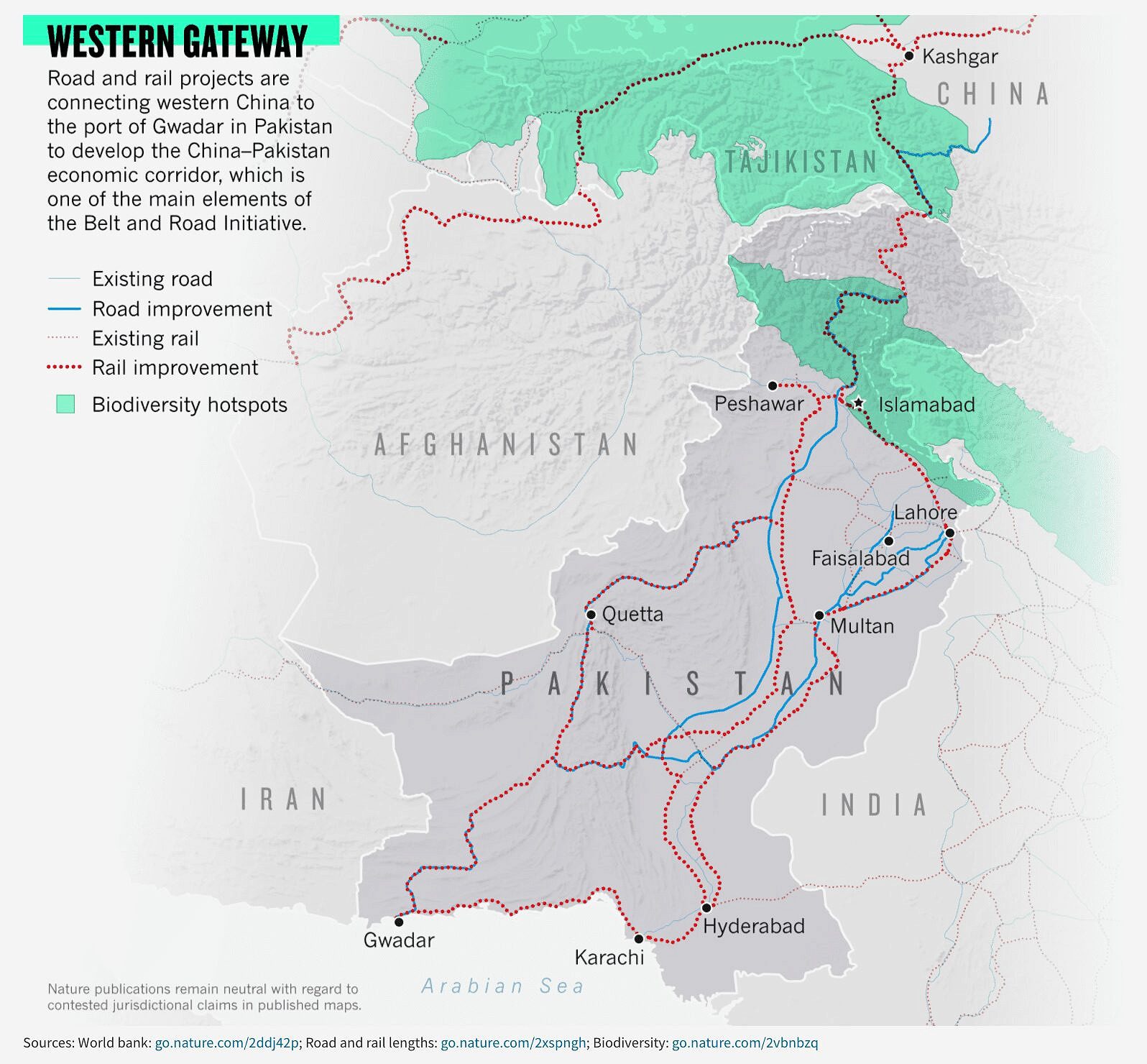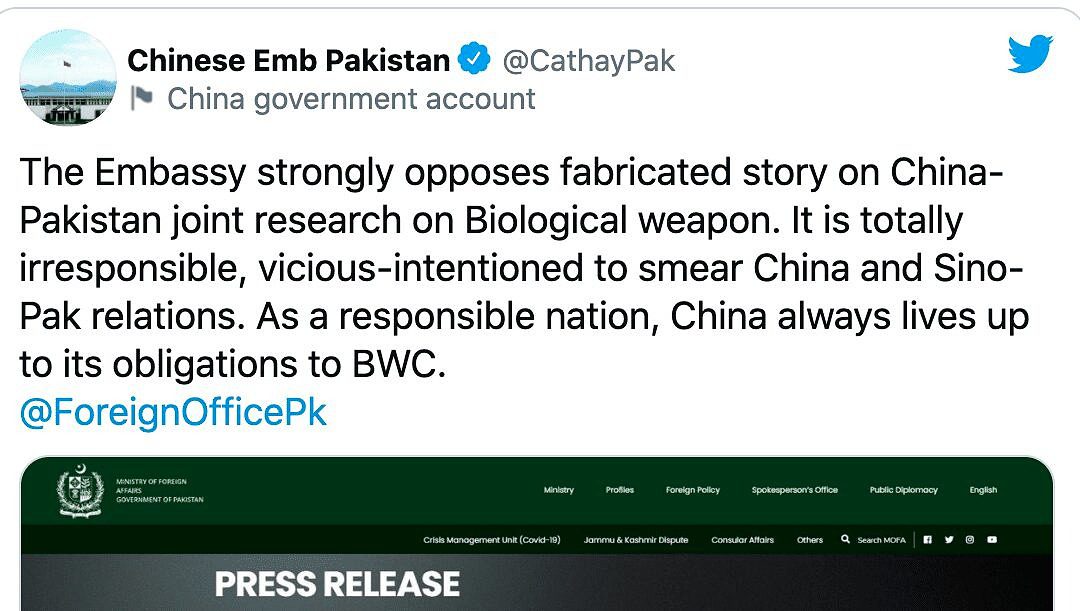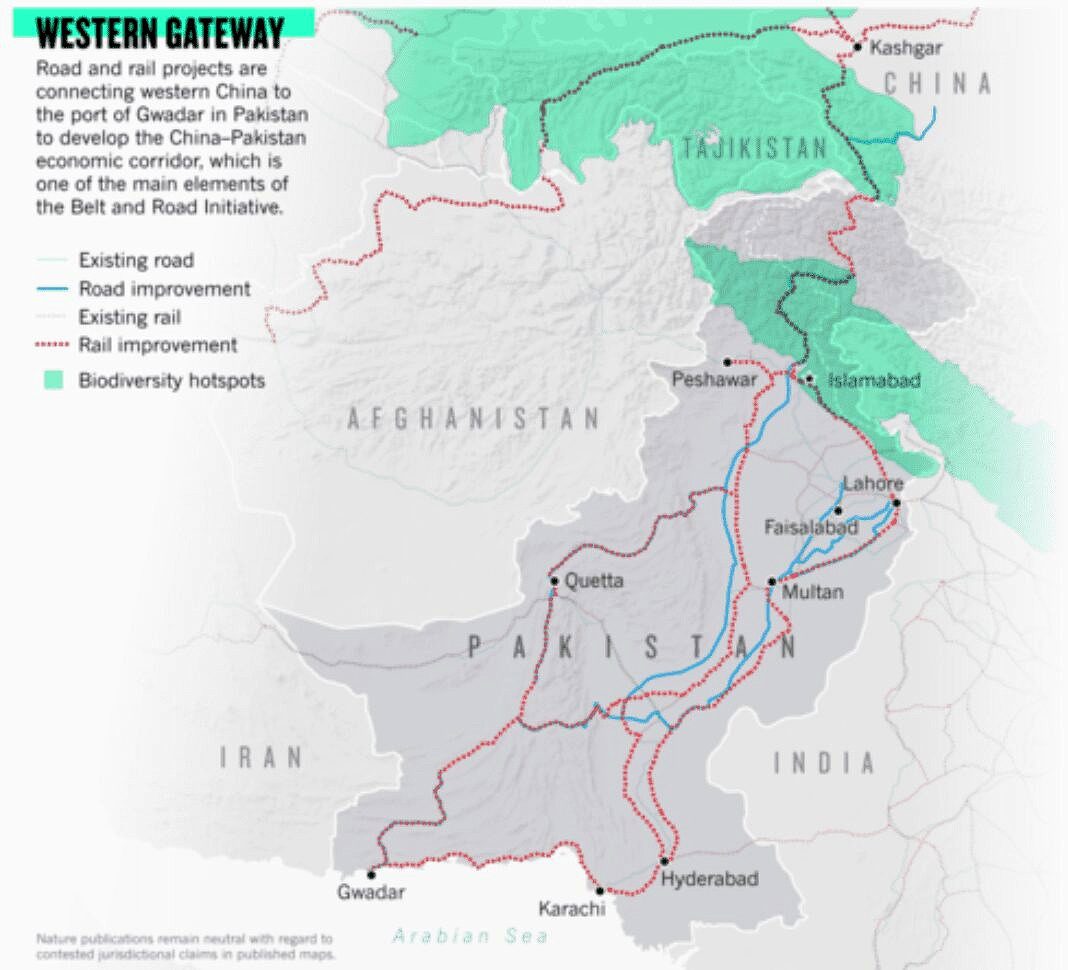Wuhan lab scientists have been conducting extensive research operations on deadly “animal-to-human” pathogens in Pakistan for several years. Studies involve over 7,000 Pakistani farmers, herders and others, and over 2,800 camels and other animals. The studies have been funded by China and appear to be a precursor to the secret new China-Pakistan military bio-program exposed by The Klaxon last month. Anthony Klan reports.
Appreciate our quality journalism? Please donate here
EXCLUSIVE
A team of key Coronavirus scientists from China’s Wuhan Institute of Virology have been conducting experiments of dangerous pathogens in “collaboration” with Pakistan for up to five years under the auspices of China’s opaque Belt and Road infrastructure scheme.
Following revelations last month that China and Pakistan’s military have allegedly entered a secretive three-year deal to expand potential bio-warfare capabilities, it has emerged Wuhan scientists have been conducting research into deadly pathogens in Pakistan since 2015.
The results of five studies conducted by Wuhan and Pakistani scientists have been published in scientific papers, each involving the “detection and characterisation” of “zoonotic pathogens”.
Zoonotic pathogens are infectious diseases that can pass from animals to humans.
The studies involve experiments and genome sequencing of the West Nile Virus; MERS-Coronavirus; Crimean-Congo Hemorrhagic Fever Virus; the Thrombocytopenia Syndrome Virus; and the Chikungunya Virus.
There is no vaccine or cure for any of those pathogens, which are among some of the world’s deadliest and most contagious.
One of the studies thanks Wuhan’s National Virus Resource Centre for “providing the virus-infected Vero cells”.
Each of the five studies states it was “supported” by the “International Cooperation on Key Technologies of Biosafety along the China-Pakistan Economic Corridor”.
That “international cooperation on key technologies” program has not been formally announced, and the only public references to it appear to be in the acknowledgement sections inside the five scientific papers we have obtained.
The China-Pakistan Economic Corridor, or CPEC, is the flagship component of China’s Belt and Road infrastructure program, both of which were announced in 2015.
The Belt and Road program has been widely criticised as being a veil for Chinese colonial expansion, which lumps poor countries with unsustainable amounts of debt and so undermining their sovereignty, enabling China to exert control and influence over them.
As recently as late 2018 Pakistan’s Government publicly attempted to push back against the China-Pakistan Economic Corridor, declaring it a bad deal, but it was almost immediately overruled by Pakistan’s powerful military, which has said it would defend the program “at all costs”.
As revealed by The Klaxon last month, highly credible intelligence sources believe China, via its Wuhan Institute of Virology, is testing lethal biological agents in Pakistan and providing “extensive training on manipulation of pathogens and bio-informatics” to Pakistani scientists, which could “enrich a potential offensive biological program”.
It was revealed China’s Wuhan Institute of Virology had allegedly recently signed a secret three-year deal with Pakistan military’s Defense Science and Technology Organisation (DESTO) to collaborate research in “emerging infectious diseases” and the “biological control of transmitted diseases”.
That Wuhan-Pakistan military tie-up had never been publicly announced or disclosed before.
Key concerns are that Pakistan could use the technology in bio-warfare, or that deadly pathogens could accidentally escape from inadequately equipped facilities.
It is alleged the program is involved in “various dual-use research projects”, meaning those that can have both civilian and military applications.
China and Pakistan have both strenuously hit back at accusations they are engaged in improper activity, however the Pakistan Government appears to have confirmed the existence of the deal between its military and the Wuhan lab – and also that the operations are occurring on Pakistan soil – although it has not identified where.
Now, it has emerged that scientists from China’s Wuhan Institute of Virology have been conducting extensive research operations with Pakistani scientists for several years, with one experiment starting in late 2015.
The five studies, published between December 2017 and March 9 this year, appear to be a pre-cursor to the new Wuhan-Pakistan military bio-program, but do not disclose any links to Pakistan’s military.
The studies
The five studies involved taking blood samples from thousands of Pakistani men, women and children; mainly those who lived in remote areas and worked closely with animals.
One of the studies, into the deadly Crimean-Congo Hemorrhagic Fever Virus (CCHFV), published on March 9 this year, states that during 2017 and 2018 blood samples were taken from 1872 humans and “1,838 domestic animals (311 buffaloes, 480 camels, 183 cattle, 440 goats and 424 sheep)”.
The study said the chance of human exposure to CCHFV was highest among herdsmen from Pakistan’s rural Balochistan province, and that detection of antibodies in “domestic livestock species “indicates a potential role of these animals in human infections”.
The Crimean-Congo Hemorrhagic Fever Virus, first identified in 1944, is labeled a “high-priority zoonotic pathogen” by the World Health Organisation because it can lead to human pandemics; has a “high case fatality ratio” of “up to 40%”; and there are no known treatments or vaccines.
The CCHFV study thanks “the National Virus Resource Centre (Wuhan, China)” for “providing the virus-infected Vero cells”.

The Klaxon’s July 23 expose.
A study into West Nile Virus, published last year, collected blood samples from 1045 Pakistani men and 25 women between 2016 and 2018, and genetic material was taken from 4150 mosquitos collected in Pakistan’s Punjab provence during 2016 and 2017.
West Nile Virus, first identified in 1937, can cause “neurological disease and death in humans”, although around 80% of cases are asymptomatic.
It is typically spread by mosquitos to humans, although human-to-human transfer can occur.
The study states West Nile Virus was not detected in any of the mosquitos. The virus was found in blood donor specimens of three asymptomatic humans the DNA was “subsequently sequenced”.
The study was “approved by the Institutional Review Board of Wuhan Institute of Virology China”.
A third study was into MERS-Coronavirus, which was first identified in 2012 and “different from any other coronavirus previously found in people”.
MERS-Coronavirus is most similar to other coronaviruses found in bats.
Like COVID-19, MERS-Coronavirus can cause a rapid onset of severe respiratory disease in humans.
The Wuhan-Pakistan study, published in October 2018, and also “approved by the Wuhan Institute of Virology”, took 2,409 human blood samples from four provinces in Pakistan during 2016-17.
Most of the people sampled were involved in rearing livestock and “840 humans were camel herders”.
Between 2015 and 2018 DNA was also collected from 776 camels.
Camels are a “reservoir host” for MERS-Coronavirus, but the virus does not harm them.
The study says no MERS-CoV antibodies were detected in humans, whether or not they had direct contact with camels.
“On one hand, active virus circulation and high seroprevalence of MERS-CoV in camel population were observed, whereas, on the other, the absence of human cases in Pakistan poses a germane question regarding the viral epidemiology in different geographic and ecological zones,” the study says.
Another of the studies was into the Severe Fever with Thrombocytopenia Syndrome Virus (SFTSV), which was discovered in rural China in 2009 and has a fatality rate of between 12-30%.
That study collected 1657 human blood samples from livestock farmers in four Pakistan provences, during 2016 and 2017.
“To set up negative and positive controls, we used serum samples from three healthy persons from Wuhan, China and serum samples from two convalescent SFTS patients from Wuhan archived in the National Virus Resource Centre,” the study says.
The fifth study was into the mosquito-transmitted Chikungunya Virus.
Eight strains were “newly isolated” from human blood samples and a “full-length genome sequence” was obtained in the study.
Belt & Road
Each of the studies was funded, all or in part, by the “International Cooperation on Key Technologies of Biosafety along the China-Pakistan Economic Corridor”.
In April 2015 China announced the China-Pakistan Economic Corridor would be a key part of its monster Belt & Road program, and promised US$46 billion ($64.2bn) to fund “infrastructure and energy projects” in the “form of loans and investments over 15 years”.
That figure was later increased to US$62bn ($86.5bn).
Many experts say it serves China’s geopolitical expansionist interests at the expense of the host countries, who suffer from a substantial net financial drain.

The “China-Pakistan Economic Corridor”, flagship project of the controversial Belt & Road infrastructure scheme. Source: Nature
A central part of the deal involves China taking possession of Pakistan’s major deep water Gwadar port and developing major infrastructure through Pakistan, delivering China direct access to the Arabian Sean and the Indian Ocean.
A detailed report into the China-Pakistan Economic Corridor, published in June by respected US non-profit research group the Brookings Institution, said the mega project remained “opaque” and that it was being driven by Pakistan’s military, rather than the Pakistan Government.
The report’s author, Dr Mahida Afzal, said despite the massive size of the project, key details including the “terms of the investments and loans, the full extent of the projects and the overall costs”, were “not revealed to the Pakistani Parliament” or to the public.
Dr Afzal writes that Pakistani Prime Minister Imran Khan “sought a reset” of the China-Pakistan Economic Corridor when his government came to power in 2018.
However Khan saw a “swift pushback from China and from Pakistan’s military”.
In September 2018 Pakistan’s debt had soared to $96 billion and Pakistan’s minister for commerce Abdul Razzak Dawood told the Financial Times newspaper: “The previous government did a bad job negotiating with China on CPEC (the China-Pakistan Economic Corridor) – they didn’t do their homework correctly and didn’t negotiate correctly so they gave a lot away”.
Ten days later, Pakistan’s chief of army staff went to Beijing without Khan, on a previously unannounced trip – and “on special invitation” of China President Xi Jinping – and announced his full support for China and the Belt & Road program.
The China-Pakistan Economic Corridor, as a “flagship” of the Belt & Road, was: “destined to proceed despite all odds and Pakistan’s Army shall ensure security of CPEC at all costs”.
Dr Afzal writes that a “lack of transparency” means that “proper accountability” of the project is not possible.
Over five years since it began, key details regarding the China-Pakistan Economic Corridor – including the “terms of investments and loans,” the “full extent of the projects” and the overall cost to Pakistan – remain “opaque”.
The Chinese and Pakistani governments “have together zealously aimed to control and drive the narrative on CPEC, aggressively stamping out criticism,” Dr Afzal writes.
The denials
Intelligence sources have told The Klaxon they believe China’s “keen interest” in the project is to “engage Pakistan against India” and to “conduct potentially dangerous experiments on foreign soil” without subjecting its own land and people to risk.
Sources said the deal, with Pakistan military’s Defense Science and Technology Organization (DESTO), was being entirely funded by China and was called the “Collaboration for Emerging Infectious Diseases and Studies on Biological Control of Vector Transmitting Diseases”.
China was helping Pakistan “develop its own virus collection database”, sources said.
In response to The Klaxon’s July 23 expose, the Pakistan Foreign ministry said the article was “politically motivated” and a “fake story” and the Chinese Embassy in Pakistan said the story was “fabricated”.
“It is a totally irresponsible, vicious-intentioned to smear China and Sino-Pak relations. As a responsible nation, China always lives up to its obligations to BWC (Biological Weapons Convention),” the Chinese Embassy in Pakistan Tweeted on July 26.
The Tweet was posted along with a copy of a press statement that had been released that same day by Pakistan’s Ministry of Foreign Affairs.
“In response to a media question about the Klaxon story on China’s Wuhan Lab conducting alleged covert operations in Pakistan, the Spokesman stated the following…” the Pakistan statement said.
“It is a politically motivated and fake story, composed of distortion of facts and fabrications that quote anonymous sources.”

Tweet from the Chinese Embassy in Pakistan in response to The Klaxon expose
Despite those attacks, the responses from both the Pakistani and Chinese authorities appeared to confirm the existence of the new three-year bio-program between China and Pakistan’s military.
And they raise far more questions than they answer.
The Pakistani Government’s July 26 response stated: “There is nothing secret about the Bio-Safety Level-3 (BSL-3) Laboratory of Pakistan referred to in the report”.
It continued: “The facility is meant for diagnostic and protective system improvement by Research and Development (R&D) on emerging health threats, surveillance and disease outbreak investigation”.
However neither Pakistan or China has elaborated on where in Pakistan this new “facility” is located, or even what it is called. (There is no facility with the name “Bio-Safety Level-3 Laboratory of Pakistan”).
The Klaxon’s July 23 article did not identify the name of any specific facility involved in the deal, or where in Pakistan such a facility might be located (we had not been provided with this information).
Pakistan’s July 26 statement said it had been “sharing information” about the “facility” with the “States Parties to the Biological and Toxins Weapons Convention (BTWC) in its submission of Confidence Building Measures.”

Statement from Pakistan Ministry of Foreign Affairs
It is unclear whether Pakistan’s military has been sharing such information with the Biological Weapon’s Convention, or if it has been sharing information, what the extent of that information is.
The only public references to the China-Pakistan military bio-deal are in connection to The Klaxon’s July 23 article.
The Klaxon has approached the Pakistan Government for comment but is yet to receive a response.
The location?
One immediate concern emerging from Pakistan’s July 26 statement is its reference to “the facility” being a “bio-safety level 3” laboratory.
Pathogens are rated as being from Class-1 to Class-4, with Class-4 being the most dangerous.
Class-4 micro-organisms are those which can kill humans, can easily travel from one person to another, and for which there are no known treatments or vaccines.
Scientific laboratories correspondingly carry ratings ranging from from Class-1 to Class-4, depending on the type of pathogens they can safely handle.
The Klaxon’s July 23 story stated that China and Pakistan had undertaken experiments on the Crimean-Congo Hemorrhagic Fever Virus (CCHFV).
CCHFV is extremely contagious and is categorised as a “class-4” micro-organism, in the same category as Ebola and the Marburg and Lassa viruses.
The July 23 article contained allegations Pakistan was carrying out laboratory tests on CCHFV, in facilities that were not equipped to deal with it safely – “non-Bio Safety Level-4 labs”.
Pakistan’s response that the tests were being carried out in a “bio-safety-level 3” laboratory appears to confirm those allegations.
Sources had told The Klaxon this lack of safety meant concerns over “manipulation of class-4 pathogens presenting bio-safety issues cannot be overlooked”.
While the five studies detail in-depth experiments and laboratory work between China’s Wuhan lab and Pakistan, none disclose where the lab work was carried out.
The study into MERS-Coronavirus states: “Viral RNA extraction and (other) experiments were performed in a laboratory where no previous MERS-CoV work has ever been done”.
Further tests were “repeated in two independent laboratories by different persons yielding different results”, although again no names or locations of those labs are provided.
Serious concerns have been raised over where these lab studies are being conducted and under what circumstances.
Establishing information about Pakistan’s key laboratories is difficult.
In December 2011 two Pakistani scientists (along with scientist from a range of other countries) responded to a survey into biosecurity initiatives conducted by US non-profit the National Academy of Sciences.
That information is now outdated, but it stated that the National Institute of Health in Islamabad had been “working at BSL-2+ and is constructing BSL-3 facilities”.
The only existing BSL-3 facilities it identified existed at Aga Khan University and at Indus Hospital Karachi.
Both facilities were “primarily used for processing samples from patients” suspected of Tuberculosis infection.
According to the World Health Organisation, around 510,000 new cases of Tuberculosis emerge in Pakistan every year, many resulting from drug resistance due to “delays in diagnosis”, ”inappropriate and inadequate drug regimens” and the “lack of a social support programme for high-risk populations”.
Bio-warfare?
The Klaxon’s July 23 article cited concerns from highly-credible intelligence sources that under the new China-Pakistan military bio-program, Pakistan’s military had been engaging in “various dual-use projects”, meaning technologies having both civilian and military capabilities.
The new bio-program is “detached from supervision of civilian universities of government health departments in Pakistan”, it is alleged.
The three year-deal “clearly outlines” that it is not “limited to stated objectives” and that new research to “monitor potential new diseases can be added by either party”.
The five China-Pakistan studies, which precede the alleged China-Pakistan military bio-program, all providing information that could be used as part of a broader push to develop vaccines or cures for the diseases.
However that same information and that same work could also be used for bio-warfare.
Pakistan is one of the poorest countries in the world and plagued with poverty, with almost half the population living on wages of less than US$2 a day ($2.80).
It is one of only two countries in the world where Polio has not been eradicated, and Polio rates are in fact growing.
One expert said if the goal of the China-Pakistan biological tie-up deal is to help Pakistan, it is unclear why China isn’t helping more in areas such as eradicating Polio or Tuberculosis, rather than funding elaborate genetic studies of deadly and rare pathogens, some of which have been known to man for over 70 years.
The Studies:
- Crimean-Congo Hemorrhagic Fever Virus (CCHF)
- A “high-priority zoonotic pathogen” of humans by the WHO because of its “potential to cause a public health emergency” and the “absence of treatment and vaccines”
- Transmitted by ticks or through contact with infected animal tissue, “during or immediately post-slaughter” of animals.
- Outbreaks constitute a “threat to public health services as the virus can lead to epidemics, has a high case fatality ratio (10-40%) and is “difficult to prevent and treat”
China-Pakistan study:
- Published March 9 2020
- In 2017-2018, tested blood samples from 1872 humans and “1,838 domestic animals (311 buffaloes, 480 camels, 183 cattle, 440 goats and 424 sheep”
- Detection of antibodies in domestic livestock species “indicates a potential role of these animals in human infections”
- “Virus infected Vero Cells”, provided by the National Virus Resource Centre, Wuhan China.
- West Nile Virus
- First recorded case in the West Nile district of Uganda, 1937
- People over 50 at highest risk of severe illness from West Nile Virus
- Mainly transmitted to humans by mosquitos
The China-Pakistan study:
- Published 2019
- 4150 mosquitos collected in Punjab Provence Pakistan between 2016-17; 1070 human blood samples, 1045 male, 25 female, taken between 2016-2018
- Virus not found in mosquitos. Virus found in blood donor specimens of three asymptomatic humans and were “subsequently sequenced”
- Study “approved by the Institutional; Review Board of Wuhan Institute of Virology (China)” and by the “Ethics Review Committee of the Government College University Faisalabad (Pakistan)”
- MERS – Coronavirus
- A “zoonotic pathogen” capable of causing severe respiratory disease in humans
- First detected in humans in 2012. Highly contagious. “At least 787 related deaths recorded”.
- Camels are a “reservoir” for the disease but camel to human transfer is very rare. Most infections are due to human-to-human infections (once they go from camels to the human population).
The China-Pakistan study:
- Published 11 October 2018
- 2409 human blood samples collected from four provinces of Pakistan during 2016-17
- 1050 blood samples and 776 nasal swabs were collected from camels between November 2015 and 2018
- Camel samples genetically sequenced, “collected from animal markets, free-roaming herds and abattoirs”.
- “Affliliations: CAS Key Laboratory of Special Pathogens and Biosafety, Wuhan Institute of Virology, Chinese Academy of Sciences, Wuhan China”.
- Severe Fever with Thrombocytopenia Syndrome Virus (SFTSV)
- An infectious disease first reported in 2009 in rural areas of Hubei and Henan provinces in Central China.
- Fatality rates 12-30%
China-Pakistan study:
- Published July 2020
- 1657 human blood samples collected from 4 Pakistan provinces during 2016-17.
- All participants “farmers of livestock (sheep, goats, cattle, buffaloes and camels)”
- In establishing “controls”, blood samples from “three healthy persons from Wuhan China” were used, along with blood samples from “two convalescent SFTS patients from Wuhan”.
- “Address for Correspondence”: Wuhan Institute for Virology, Chinese Academy of Sciences, Wuhan, China
- Chikungunya Virus (CHIKV)
- Mosquito transmitted virus, “re-emerged in India and Indian Ocean regions in 2005-06”.
- Since November 2016 CHIKV has been “widely spread, and more than 4,000 cases of infections in humans were confirmed in Pakistan.
China-Pakistan study:
- Published 21 December 2017
- Eight strains “newly isolated” from human blood samples
- A “full-length genome sequence” and “eight complete envelope sequences” obtained in the study
*Sources: Scientific publications, World Health Organisation
The new bio-program between China and Pakistan military:
Alleged:
- China’s Wuhan Institute of Virology has recently signed a three-year deal with the Pakistan military’s Defense Science and Technology Organization (DESTO)
- The program is funded by China
- Called the “Collaboration for Emerging Infectious Diseases and Studies on Biological Control of Vector Transmitting Diseases”
- It is the continuation of “existing cooperation” under the China Pakistan Economic Corridor, China’s flagship “Belt & Road” project
- China’s Wuhan Institute of Virology has “lent all financial, material and scientific support for the project”
Do you know more? anthonyklan@protonmail.com
Help us get the truth out from as little as $10/month.
Unleash the excitement of playing your favorite casino games from the comfort of your own home or on the go. With real money online casinos in South Africa, the possibilities are endless. Whether you’re into classic slots, progressive jackpots, or live dealer games, you’ll find it all at your fingertips. Join the millions of players enjoying the thrill of real money gambling and see if today is your lucky day!
The need for fearless, independent media has never been greater. Journalism is on its knees – and the media landscape is riddled with vested interests. Please consider subscribing for as little as $10 a month to help us keep holding the powerful to account.






